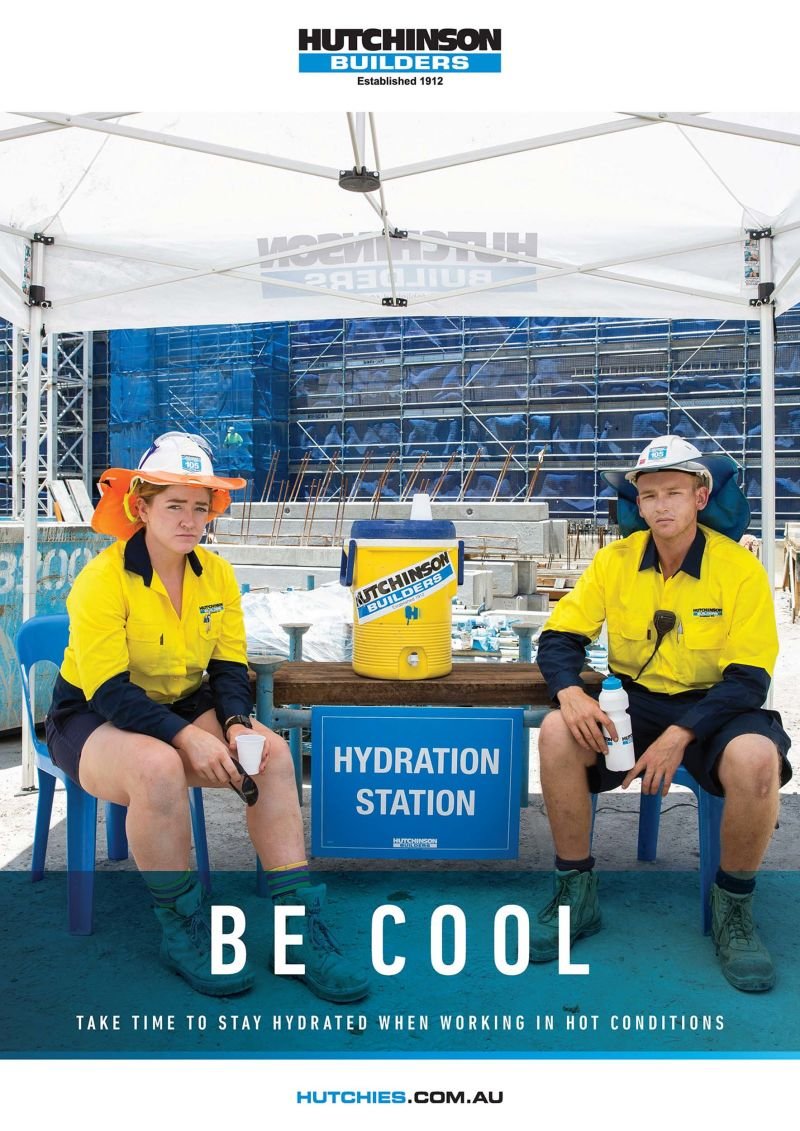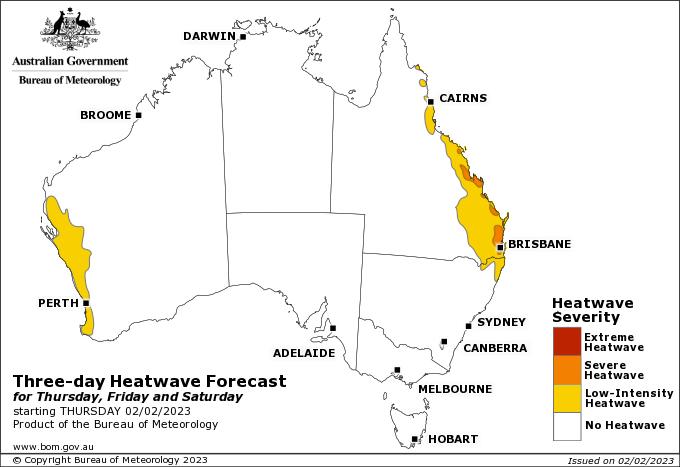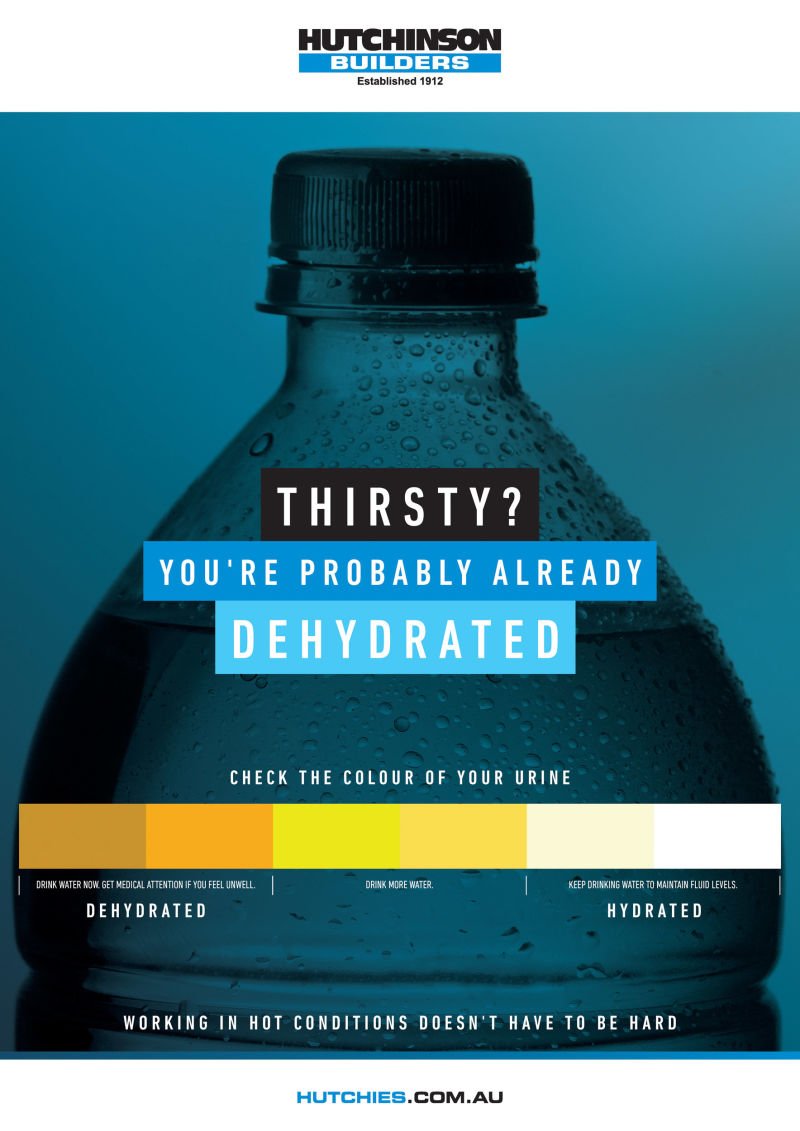
Heat related illnesses occur when heat builds up in the body faster than the body can lose it. Excess body heat can occur when a person is exposed to extremes of temperature and humidity, and when generated from exertion or physical activity.
Factors that may contribute to heat related illnesses:
- The temperature / humidity and movement of the surrounding air
- The type and duration of work activity
- A persons physical condition, in particular when not acclimatised to conditions and/or activity
- Insufficient hydration
- Medical conditions (hypertension, diabetes) and some medications and substances



